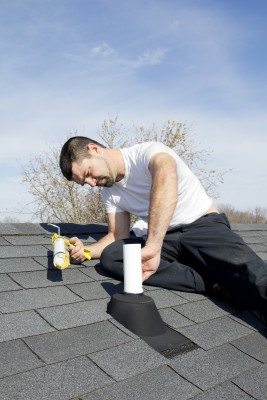
Roof leaks can occur for many different reasons, but leaks typically begin small and evolve into larger issues over time. Even small roof leaks can result in significant damage to you home. In addition to the stains that roof leaks can leave on your ceiling, they can also result in mold growth and/or rotting. Additionally, roof leaks can result in troublesome electrical shorts. While checking for roof leaks is not as easy as changing a light bulb, you can check for them yourself.
Roof leaks are interesting in that roof leaks are very rarely directly above the damaged ceiling area. Roof leaks typically begin/form at a higher spot on the roof and then show ceiling damage or other evidence of a leak, farther down the down the roof. One thing that can prevent roof leaks from becoming a larger issue down the road, is to ensure that your attic is adequately ventilated. If you would like to check for existing leaks can go into their attic and see if there are any dark spots on the decking. The purpose of this is to catch small leaks while they are small and prior to them causing a lot of damage. Most asphalt shingle roofing materials are designed to last approximately 18-22 years, but they can last longer or shorter depending on the maintenance you perform on your roof.
If it turns out that your decking is water-stained, you can be pretty sure that you have either a roof leak or a condensation problem. Figuring out which problem you have is something you want to do so that you don’t try to fix something only to realize that it doesn’t fix the problem. Condensation is easily identified because it is generally in the corner near an exterior wall. Additionally, you will typically see some smaller circles with white-colored centers. Rain leaks on the other hand, can be found anywhere on the decking. Until you have identified the source of the leak don’t bother replacing the drywall because you may replace the drywall only to find that the source of the leak is still going to impact the newly patched section of roof.
In order to find the roof leak, you should check the entire roof for potential damage and/or leaks. When doing this, be sure to walk on the rafters of a sheet of plywood to ensure that you don’t damage the decking. If you do happen to find a leak, the best solution is to hire a professional to do all of this for you.

